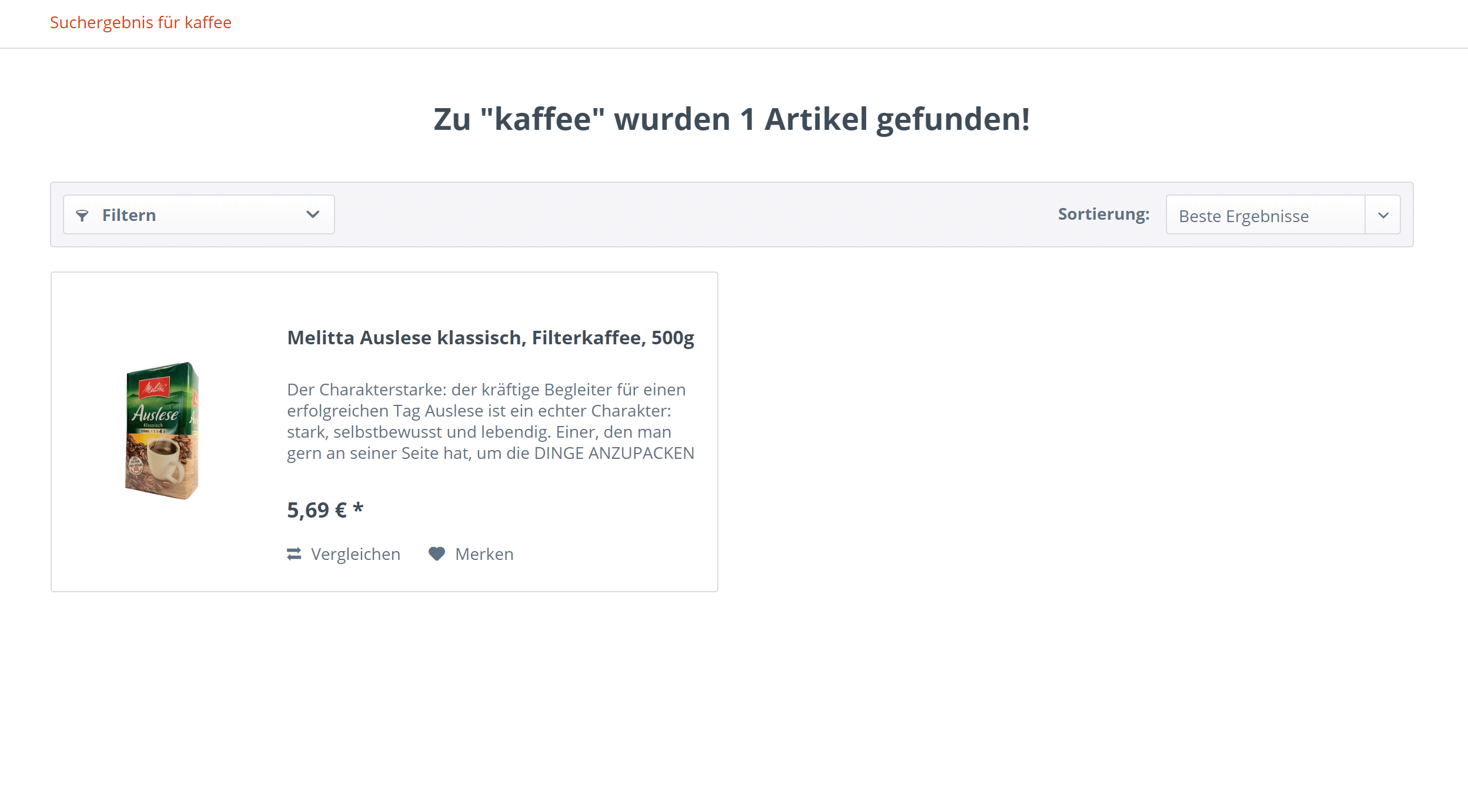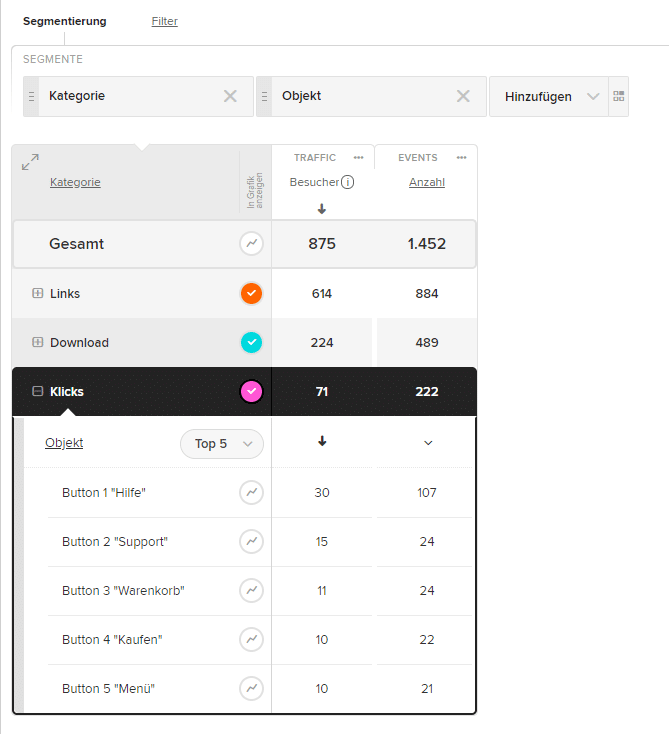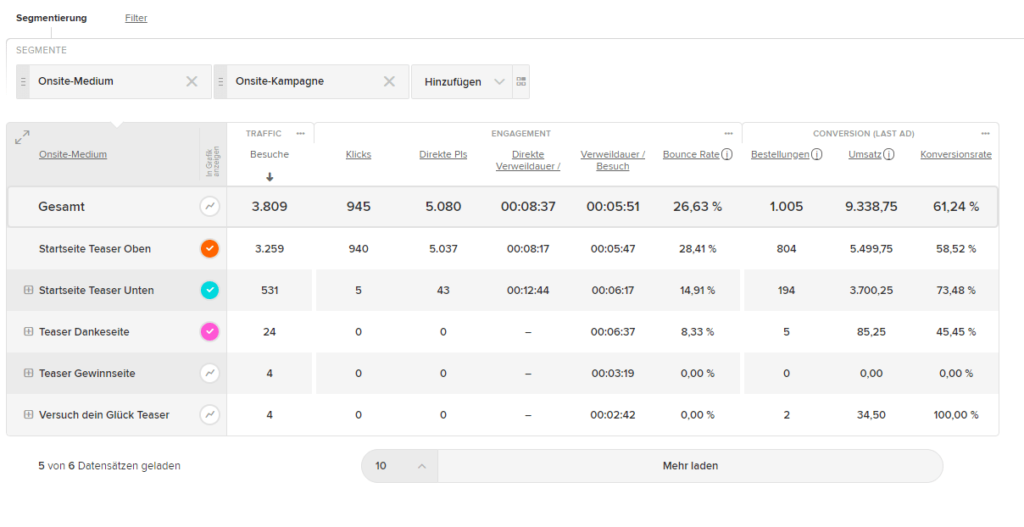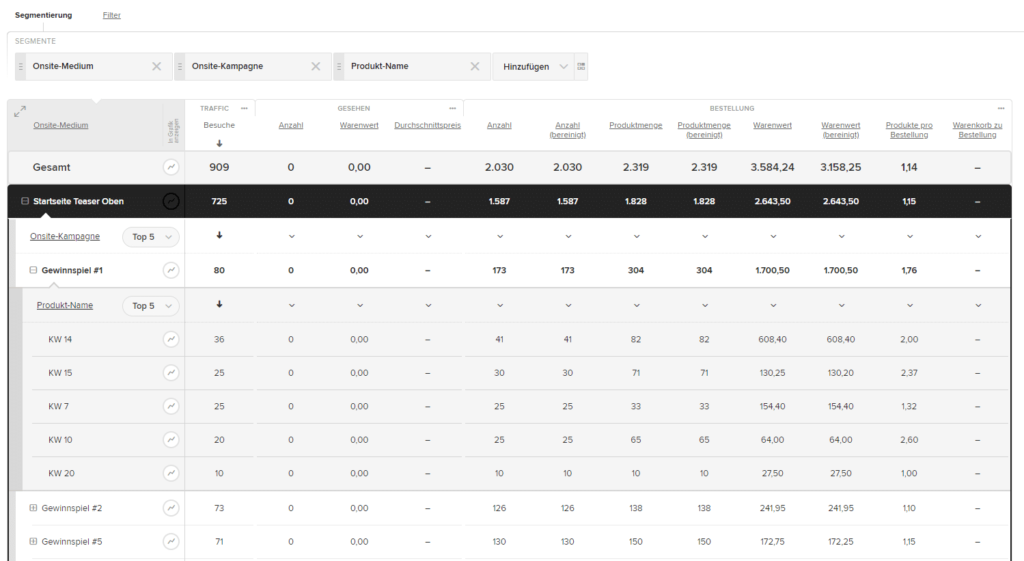Tracking onsite functions and internal campaigns: mandatory and optional

by Olaf Brandt
There are various functions in a store to increase conversions: Onsite search, teaser areas (internal banners), list of recently viewed items, product recommendations, product videos and the like. But how do you find out whether and to what extent these measures increase conversions and sales in order to effectively manage and optimize these tools?
Event Tracking
It is mandatory to simply count the clicks on individual functions. However, in order to see how strongly each one contributes to success and in which context it works particularly well or less well, it is not enough to simply measure its use, i.e. how often the function or element is interacted with, i.e. clicked on. It is crucial to find out which interactions have ultimately led to conversions such as orders, contact requests, registrations, etc.

Onsite campaigns
The use of functions such as clicks on buttons can be recorded and analyzed via event tracking. However, tracking via so-called onsite campaigns is required in order to be able to view the success. This allows both clicks and downstream conversions, including the associated sales, to be measured. Onsite campaigns function in principle like regular campaigns, but run in a separate “campaign universe”, as they do not overwrite external traffic sources and have no influence on the performance measurement of external campaigns.

Product Performance (Onsite) Report
In addition, every store operator is interested in which categories and articles perform best via the internal campaigns. Matching the advertised items with the ordered items is often important for assessing the performance of .
The ultimate in tracking onsite campaigns is therefore the Product Performance (Onsite) report in etracker analytics. If a store wants to look at conversions (micro and macro conversions) broken down by product category and article, you can find all the information here. The report shows exactly which items were viewed, which were added to the shopping cart and which were left or purchased after an internal campaign was clicked on, a certain search was carried out or a certain video was watched. In addition, you can see for which article the recommendations displayed lead to the desired result, i.e. to an additional purchase, and whether the click on an internal banner actually led to the purchase of the advertised product. And this applies at article level as well as at category level.
The Product Performance (Onsite) Report helps to reliably evaluate success and thus effectively control the optimization of store functions.

Here is an example:
A store visitor adds a camera worth 1,000 euros to their shopping cart. A suitable bag and tripod are recommended in the shopping cart. The visitor clicks on the recommendations, but ultimately only orders the camera.
Event Tracking:
A Analytics report on events would measure a click for the visitor, but would not allow to make any statements about the subsequent order.
Onsite campaign:
The report for the internal campaign “Product recommendations” would measure a click for the visitor and a subsequent order as a conversion with an order value of EUR 1,000.00 . However, it is not possible to see whether the recommended item has been ordered.
Product Performance Report:
The PPR shows that although the recommendation served to generate attention and encourage the visitor to click on the recommended item, it did not lead to an increase in the shopping cart. Consequently, the reported success could lead to a false conclusion. The report could be used to look at the “Accessories” product category and see how much accessory sales were actually generated by the measure.
Here you will find instructions for implementation:
Stay barrier-free: Design cookie banners with the etracker consent manager
Taking a relaxed approach to the new consent management regulation

